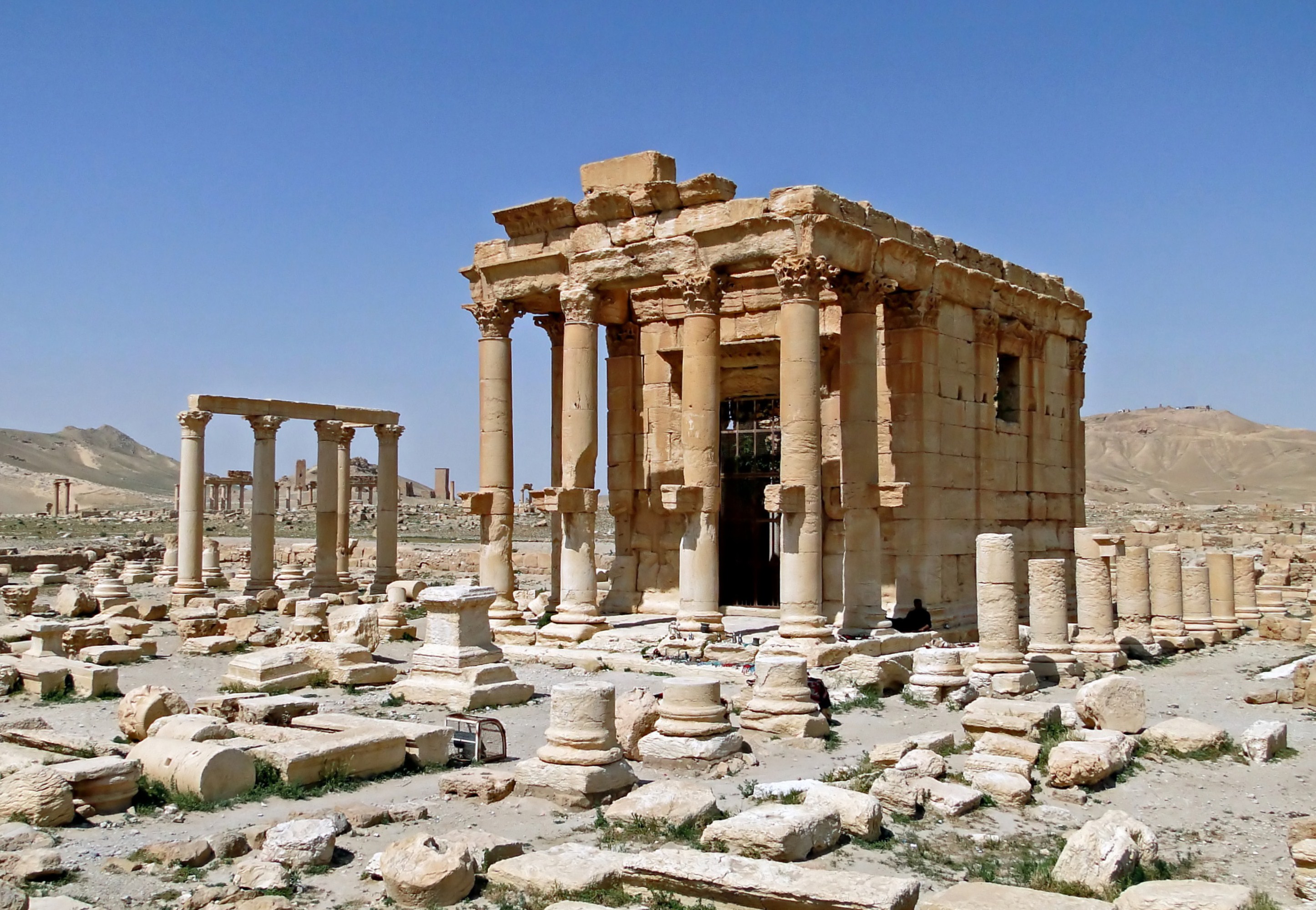By Alexandre Bohas
Translation: Lawrence Myers
Passage au crible n° 128
 Source: Wikipedia
Source: Wikipedia
With the capture of Palmyra by Islamic State troops in Iraq and in the Levant (ISIL or Daesh in Arabic) in May, one of the most prestigious sites of antiquity is now threatened with extinction. This event testifies to ideological motives of this self-proclaimed caliphate against cultural buildings.
> Historical background
> Theoretical framework
> Analysis
> References
Historical background
In recent years, attacks against religious monuments by various groups claiming radical Islam have multiplied. These include the Buddhas of Bamiyan in 2001, which were blown up by dynamite by the Afghani Taliban regime, or the attacks on Muslim mausoleums in Timbuktu in 2012, by rebels fighting against the Malian regime during their occupation of the city. To these events, we add political instability in Egypt and Libya; a situation which favored the pillaging of numerous museums and archaeological sites, both for economic and religious reasons.
Otherwise, civil wars in Iraq and Syria have created the conditions for the long-term establishment of ISIL in certain parts of both countries. Yet, this group allegedly occupies 4,500 archaeological sites. Its supporters attacked Mesopotamian sites, but also Muslim places of worship like the tomb of Jonah in Mosul. In Syria, 90% of destruction focused on Muslim artifacts such as tombs, altars and mosques, the latter dating from the 13th and 14th centuries.
Since the end of February 2015, the sacking perpetrated in the Mosul museum as well as against the Assyrian and Parthian sites of Nimrud and Hatra have been carefully filmed and broadcast on social networks. These devastations have provoked consternation in the West as well as condemnation by UNESCO. For that matter, UNESCO is proving to be incapable of protecting these buildings classified as World Heritage Sites.
Theoretical framework
1. A reaction against the pluralization of the world. Globalization brings about a “pluralization” (Cerny) of modern societies. By promoting flows and transnational movements in cultural and socioeconomic terms, it provokes isolationism and a reaction against that which is other than oneself, emblematic of a “brutalization of the world” (Laroche). In this case, the vandalism of monuments committed by ISIL aims to do away with specificities and syncretism, both past and present, in the name of a purified, extremist and dogmatic Islam.
2. The transnationalisation of a quest for identity. These cultural destructions in Iraq, Libya and Mali are exploited in order to manipulate individuals who are both poorly integrated and disadvantaged. These individuals therefore embrace a fanatic ideology, which gives purpose to their empty existence (Hoffer). Building on a fundamentalist and antimodernist interpretation of Islam, it offers its supporters, from various backgrounds, a simplified vision of the world and also offers them a transnational identity.
Analysis
Far from being spontaneous, these sackings have been carefully calculated and organized. They are justified by the refusal to commit idolatry, forbidden by all monotheist religions. Modeled after the image of the iconoclastic controversy (8th century) and English Puritanism (17th century) in Christianity, ISIL invokes the idolatrous character of all devotion and of each place of worship, current or past, which is not directly addressed to God. In this perspective, only ISIL can be a religious practice. The sacking of Nimrod and Hatra resulted precisely from the outrageous application of this fundamental principal of Islam, which figures on ISIL’s emblem: «لا إله إلا الله » (“There is no god but God”).
ISIL films showing the devastations of Hatra or the Museum of Mosul are the result of an elaborate strategy. Along these lines, analysts have admitted their doubt regarding the authenticity of certain destroyed statues. Plaster copies were allegedly used since the original statues were supposedly sold beforehand in order to finance the war effort. Otherwise, the combatants appearing in ISIL propaganda films were identified by their accents: they allegedly come from Africa, the Indian subcontinent and the Maghreb. In other words, none of them might actually be from Mashriq, the region from Syria to Egypt. Therefore, this video is purportedly intended to recruit Muslims living far from theaters of conflict and who are often marginalized. In this regard, let us recall that Daesh forces are largely made of foreign fighters.
Besides this, it is important to consider the global attraction that ISIL exerts on certain young Muslims. This appeal can be likened to what secular religions were doing in the 1950s as described by Eric Hoffer. Today these groups of fanatic believers find a favorable echo in the extremist Islam that they advocate. All the more so since globalization reinforces their appeal by increasing their audience. The deterritorialization of relationships that characterize the strength of these communalist movements are made possible by new technologies, notably the Internet. But globalization upsets the traditional frameworks that unite cultures and societies. In so doing, it elicits isolationism that often seek to violently reaffirm undermined dogmas. Thus the cultural destructions by ISIL testify to the will to obliterate the diversity of religious, historical and cultural practices characteristic of Mesopotamia.
References
Cerny Philip G., Rethinking World Politics: A Theory of Transnational Pluralism, New York, Oxford University Press, 2010.
Evin Florence, « L’État islamique met en scène la destruction de la cité antique d’Hatra », Le Monde, 4 avril 2015.
Hoffer Eric, The True Believer: Thoughts on the Nature of Mass Movements, New York, Harber & Brothers, 1951.
Laroche Josepha, La Brutalisation du monde. Du retrait des États à la décivilisation, Montréal, Liber, 2011.
Schama Simon, « Artefacts Under Attack », Financial Times, 13 March 2015.




